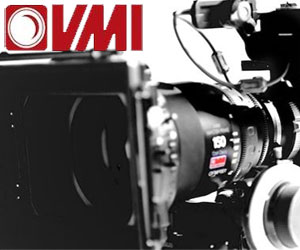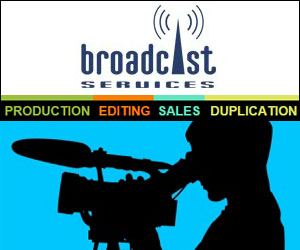Broadcast News
08/06/2018
The Crucial Values Of A Cloud Native Architecture

After an NAB that was riddled with cloud native technology, and people saw the huge merits of micro services plus the massive potential of AI, it was surprising to learn from the IABM that public cloud is the preferred deployment strategy for 19% of end users, thus far.
The additional statistics suggest 30% have gone with off premise private clouds, some 25% are playing with hybrid cloud situations, and on premise private clouds stand at 22%. The last figure is a surprise because the massive advantages of the public cloud hugely outweigh the few benefits of public cloud, but these are generally being used to effect the conversion to IP and IT, and those companies can explore the public cloud by putting their variable capacity there.
Everyone is familiar with the out-sourcing term lift-and-shift, and it sounds clumsy given the huge desire to move away from the CAPEX damnation of costly plant to a perpetual OPEX model of paying for what you need when you want it, and using the cloud for all the back-office stuff.
OPEX business models let people grab at commercial extension opportunities without high financial cost outlays up front, and without any long-term commitment.
The EBU like the IABM is a great weather vane, and with its broadcaster membership it is presently running projects on using cloud technologies for media production around IP and remote, cloud used for big-date applications in the area of recommendation engines, and cloud for artificial intelligence applications. These are the front lines of the many different motivations for cloud.
To get a vendor eye view of what is happening, BFV spoke to one of the biggest names waving the 'cloud native' flag – Imagine. It is no longer worth building applications unless they are designed for the cloud, and many single services like QC will come under the on-demand ID where users pay per hour of content.
Makes a lot of sense
Batting for Imagine was CTO Steve Reynolds, and he started by addressing the IABM stats.
He said: "A lot of our user base in the media space are moving forward with cloud projects, so our numbers would look a bit higher then the 19%."
Imagine is close to the leading edge of cloud technologies and works with some big outfits, but it sees a lot of interest in private and hybrid clouds.
"The reason for that is that people look at cloud as being a way to scale into capacity. If you are building for a fixed amount of capacity it is tough to argue with the economics of a CAPEX purchase," said Reynolds. "If you are trying to build 20 channels of playout and you are going to operate 24/7 by 365 the bean counters still favour buying equipment and installing that in an existing data centre or broadcast facility.
"But if you are looking for a usage pattern that is not 24/7 the cloud is pretty cost-effective," he added.
"We work with one company that uses Microsoft Azure to run a playout system three hours a day. They distribute national content and then go back to local control at the affiliate for the rest of the broadcast day."
The message here is that there is no reason to invest in full-time capacity for 21 hours a week.
"There certainly are situations where buying cloud capacity as you need it makes a lot of sense. Whether that is done private or public cloud comes down to the commercial decision more than the technical one," said Reynolds.
"The reason people are moving to IP is part of the reason they are moving towards the cloud, because the competitive landscape for broadcasters is changing dramatically. Their business model is shaping in a way such that they have got to be able to support more channels and a number of distribution media," he added. "It is not just broadcast now. We see companies that are doing hand-offs to online video distribution partners. We see people having to build distribution packages for the OTT providers.
"In that proliferation of all the different distribution platforms and formats a broadcaster has to be able to target, and it has driven them into wanting to adopt a much more flexible and scalable platform for media processing and channel play out. That's what we see driving people in the direction of IP and software-based playout faster than anything else," he continued. "They need flexibility, and to be able to evolve their business in the direction they see the market moving."
The really big expense is egress
One of the constant conversations Reynolds had at NAB was about consumers connecting to cloud-based content services.
"It really makes sense to produce that content in the cloud. If you are looking at cloud costs, the price of getting media into the cloud is reasonable. You do have to pay for storage and the upload, but it is reasonable to get the content into the cloud. Buying the compute in the cloud to be able to do something like a playout application is also pretty cost-effective now too," he said.
"The really big expense is egress, getting a signal out of the cloud, so for those people who are running public cloud playout their signal link is expensive."
Fear not. There is an answer to the cost of the egress capacity required to get a transport stream out of the cloud.
"If you don’t have to get the signal out of the cloud because the consumer is connected to the cloud, then you will eliminate the biggest cost," said Reynolds.
"Building channels in the cloud that are intended for distribution across the cloud (consumer playout) makes a lot of sense."
Is the Imagine media business client base aware that they are now using the exact same tools as all other industries?
"Some are. Some are not. Some have already made that transition to IT and IP implementation, and they have fully embraced the notion that they are running and using the same technology used in telecoms, finance and many other industries that have already moved to the cloud and Internet," said Reynolds. "They are the users that Imagine has really focused on working with – the guys who are closer to the leading edge."
Imagine, like Grass Valley, still sells a lot of SDI production and playout systems, and the market expectation would be that some people will have to eventually jump a technology generation to catch up. Reynolds looks to the inevitable.
"We see more of a migration to towards software-based production, software-based playout and software-based master control. It is somewhat inevitable that the entire industry moves there over a period of time."
Imagine can track its switch to cloud-based deployment technologies back to 2015, when a big customer ran a live broadcast from the cloud. Since then it has helped people operate cloud-based production and playout systems, and has perfected the creation of many customised migration strategies. One of the big technology moves for end users is the efficient deployment of SMPTE ST 2110.
"The decision was made four or five years ago to start moving down the path of a micro services development pattern, and all of our software is developed using that kind of architecture. We build micro services that can talk to one another in a cloud-enabled framework, and that has really helped us accelerate as we have made our move towards doing cloud implementations, whether it is production systems, playout systems, or media processing systems,' said Reynolds.
"Because we had adopted a cloud native architecture, it has been considerably easier to migrate our applications into deployment environments. And it has been easier for us to extend those applications to embrace the new technologies," he added.
Reynolds pointed at industry rivals still building “monolithic executable software”. No cloud native architecture makes it harder to transition.
"The thing that we are really interested in right now is AI. We are starting to incorporate AI and some machine learning apps into the services we are building," said Reynolds.
NAB visitors will have seen Imagine's integration with IBM Watson and its cloud native AI potency to show real-time speech to text for the support of live captioning.
"It was a pretty good example of how to use AI technology to do something that the entire broadcast industry has had trouble with for years," said Reynolds. "Live captioning has been a hard thing to crack.
"That IBM engine has the ability to learn so many languages and dialects so it can pick up some of the nuances of specific kinds of content. Sport has a lot of place, team and player names, and finance has a lot of jargon and acronyms that the AI needs to learn, and it learns everything so much faster than a human expert," he added.
Pay as you go basis
NAB visitors were really impressed by the things that Imagine did with Watson. Did they reveal that the cloud is pushing them to an OPEX mentality?
"The cloud is moving people to that mentality, and that is across the board. It is not anything specific to the broadcast industry," said Reynolds. "CFO executives want to deploy money whether it is CAPEX or OPEX but there has been huge change in the last two years. The financial part of our customer base is starting to move to paying for things that generate revenue. The idea of a big up front capital purchase is something that people are moving away from. They don't want to invest capital in advance of the revenue. They want to find a way to pay on an as-you-go basis."
So people want to pay for the capacity they would use, and pay for services, plus any infrastructure and storage. But they will do that in a way that is tied to the revenue stream that those services are helping to generate.
"That is a transition that is happening now, and if anything, it is accelerating," said Reynolds.
The power behind this acceleration, and the differentiator between public cloud and the rest, is the promise of micro services.
"When we can construct an air chain out of micro services we are helping a user stand up a single channel playout using our infrastructure. That micro services chain only needs to include exactly the things that the user wants to deploy," he said. "They are not paying for capabilities that are dormant in the software. They are not incurring the overhead of processing in memory and storage for features that they have no intention of using in that playout channel."
The test of any micro services architecture is that you can use exactly what is needed to achieve an outcome, and that each one can be surgically upgraded very easily. The user wants everything to be highly scalable and highly configurable for running their processing, playout and production apps. Will users find that compute costs are an issue when all their software is in the cloud?
"No. We do a lot of PCO analysis and compute costs in the cloud are fairly reasonable. Arguably, it has got to the point where it is cheaper to buy certain kinds of compute in the cloud than it is to actually purchase the hardware," said Reynolds. "I don't think compute costs are going to be the problem. The big problem right now is that cost factor of egress and ingress, the price of moving bits into and out of the cloud. If anything right now is slowing down the adoption of the cloud it is actually that.
"Ultimately the cloud providers are going to have to find a way to address that, or it is going to continue to be a drag on the market. They have to find a way to make it cheaper to get transport streams out of the cloud," he added.
Imagine has witnessed the coming of a number of cloud-based editing systems, and it has a partnership with EditShare.
"They have a proxy-based editing system, partly for the reason that it can give optimal performance and also make sure that you are only bringing media out of the cloud as necessary to perform the editing function. The main trend there is that people are starting to figure out how to build applications in a way such that they are optimised for the cloud," said Reynolds. "That is a trend you are going to see continuing for the next couple of years, as everyone in the broadcast industry comes to grips with what it really means to operate in the cloud and operate from the cloud.
"Every major company that we are talking to has some kind of an initiative going on around cloud storage, editing, playout, production or distribution. The industry is really starting to embrace this because they see the commercial advantages," he added. "They also see the advantages of better connection with their customers – the viewers. It is definitely the future."
Nothing is monolithic
Imagine does not play in the area of building big metadata MAM type systems, but Reynolds identified metadata as a problem area that has to be resolved for cloud users.
"It won't get solved if people just try to take the current designs around metadata management and migrate those to a cloud environment. The industry has to build a cloud native content management and cloud native metadata management system," he said.
Reynolds is a big fan of the guiding light values in the JTNM (Joint Taskforce on Networked Media) when it comes to the mapping out of the necessary standards, "around which we can collaborate, integrate and build those virtual live systems".
He is also looking for a standardisation effort around APIs. This would cover many aspects, as there are APIs that involve everything that goes into the essence (audio, video, metadata, tracking data) and APIs used in discovery, control and virtualisations.
"To build these end-to-end environments nothing is monolithic. Nothing comes form a single vendor. This sponsors an environment where there is genuine realisation and collaboration between multiple parties. We need something like that in the broadcast industry, and that is what the JTNM is trying to map out,' said Reynolds.
This article is also available in the June edition of Broadcast Film & Video.
The additional statistics suggest 30% have gone with off premise private clouds, some 25% are playing with hybrid cloud situations, and on premise private clouds stand at 22%. The last figure is a surprise because the massive advantages of the public cloud hugely outweigh the few benefits of public cloud, but these are generally being used to effect the conversion to IP and IT, and those companies can explore the public cloud by putting their variable capacity there.
Everyone is familiar with the out-sourcing term lift-and-shift, and it sounds clumsy given the huge desire to move away from the CAPEX damnation of costly plant to a perpetual OPEX model of paying for what you need when you want it, and using the cloud for all the back-office stuff.
OPEX business models let people grab at commercial extension opportunities without high financial cost outlays up front, and without any long-term commitment.
The EBU like the IABM is a great weather vane, and with its broadcaster membership it is presently running projects on using cloud technologies for media production around IP and remote, cloud used for big-date applications in the area of recommendation engines, and cloud for artificial intelligence applications. These are the front lines of the many different motivations for cloud.
To get a vendor eye view of what is happening, BFV spoke to one of the biggest names waving the 'cloud native' flag – Imagine. It is no longer worth building applications unless they are designed for the cloud, and many single services like QC will come under the on-demand ID where users pay per hour of content.
Makes a lot of sense
Batting for Imagine was CTO Steve Reynolds, and he started by addressing the IABM stats.
He said: "A lot of our user base in the media space are moving forward with cloud projects, so our numbers would look a bit higher then the 19%."
Imagine is close to the leading edge of cloud technologies and works with some big outfits, but it sees a lot of interest in private and hybrid clouds.
"The reason for that is that people look at cloud as being a way to scale into capacity. If you are building for a fixed amount of capacity it is tough to argue with the economics of a CAPEX purchase," said Reynolds. "If you are trying to build 20 channels of playout and you are going to operate 24/7 by 365 the bean counters still favour buying equipment and installing that in an existing data centre or broadcast facility.
"But if you are looking for a usage pattern that is not 24/7 the cloud is pretty cost-effective," he added.
"We work with one company that uses Microsoft Azure to run a playout system three hours a day. They distribute national content and then go back to local control at the affiliate for the rest of the broadcast day."
The message here is that there is no reason to invest in full-time capacity for 21 hours a week.
"There certainly are situations where buying cloud capacity as you need it makes a lot of sense. Whether that is done private or public cloud comes down to the commercial decision more than the technical one," said Reynolds.
"The reason people are moving to IP is part of the reason they are moving towards the cloud, because the competitive landscape for broadcasters is changing dramatically. Their business model is shaping in a way such that they have got to be able to support more channels and a number of distribution media," he added. "It is not just broadcast now. We see companies that are doing hand-offs to online video distribution partners. We see people having to build distribution packages for the OTT providers.
"In that proliferation of all the different distribution platforms and formats a broadcaster has to be able to target, and it has driven them into wanting to adopt a much more flexible and scalable platform for media processing and channel play out. That's what we see driving people in the direction of IP and software-based playout faster than anything else," he continued. "They need flexibility, and to be able to evolve their business in the direction they see the market moving."
The really big expense is egress
One of the constant conversations Reynolds had at NAB was about consumers connecting to cloud-based content services.
"It really makes sense to produce that content in the cloud. If you are looking at cloud costs, the price of getting media into the cloud is reasonable. You do have to pay for storage and the upload, but it is reasonable to get the content into the cloud. Buying the compute in the cloud to be able to do something like a playout application is also pretty cost-effective now too," he said.
"The really big expense is egress, getting a signal out of the cloud, so for those people who are running public cloud playout their signal link is expensive."
Fear not. There is an answer to the cost of the egress capacity required to get a transport stream out of the cloud.
"If you don’t have to get the signal out of the cloud because the consumer is connected to the cloud, then you will eliminate the biggest cost," said Reynolds.
"Building channels in the cloud that are intended for distribution across the cloud (consumer playout) makes a lot of sense."
Is the Imagine media business client base aware that they are now using the exact same tools as all other industries?
"Some are. Some are not. Some have already made that transition to IT and IP implementation, and they have fully embraced the notion that they are running and using the same technology used in telecoms, finance and many other industries that have already moved to the cloud and Internet," said Reynolds. "They are the users that Imagine has really focused on working with – the guys who are closer to the leading edge."
Imagine, like Grass Valley, still sells a lot of SDI production and playout systems, and the market expectation would be that some people will have to eventually jump a technology generation to catch up. Reynolds looks to the inevitable.
"We see more of a migration to towards software-based production, software-based playout and software-based master control. It is somewhat inevitable that the entire industry moves there over a period of time."
Imagine can track its switch to cloud-based deployment technologies back to 2015, when a big customer ran a live broadcast from the cloud. Since then it has helped people operate cloud-based production and playout systems, and has perfected the creation of many customised migration strategies. One of the big technology moves for end users is the efficient deployment of SMPTE ST 2110.
"The decision was made four or five years ago to start moving down the path of a micro services development pattern, and all of our software is developed using that kind of architecture. We build micro services that can talk to one another in a cloud-enabled framework, and that has really helped us accelerate as we have made our move towards doing cloud implementations, whether it is production systems, playout systems, or media processing systems,' said Reynolds.
"Because we had adopted a cloud native architecture, it has been considerably easier to migrate our applications into deployment environments. And it has been easier for us to extend those applications to embrace the new technologies," he added.
Reynolds pointed at industry rivals still building “monolithic executable software”. No cloud native architecture makes it harder to transition.
"The thing that we are really interested in right now is AI. We are starting to incorporate AI and some machine learning apps into the services we are building," said Reynolds.
NAB visitors will have seen Imagine's integration with IBM Watson and its cloud native AI potency to show real-time speech to text for the support of live captioning.
"It was a pretty good example of how to use AI technology to do something that the entire broadcast industry has had trouble with for years," said Reynolds. "Live captioning has been a hard thing to crack.
"That IBM engine has the ability to learn so many languages and dialects so it can pick up some of the nuances of specific kinds of content. Sport has a lot of place, team and player names, and finance has a lot of jargon and acronyms that the AI needs to learn, and it learns everything so much faster than a human expert," he added.
Pay as you go basis
NAB visitors were really impressed by the things that Imagine did with Watson. Did they reveal that the cloud is pushing them to an OPEX mentality?
"The cloud is moving people to that mentality, and that is across the board. It is not anything specific to the broadcast industry," said Reynolds. "CFO executives want to deploy money whether it is CAPEX or OPEX but there has been huge change in the last two years. The financial part of our customer base is starting to move to paying for things that generate revenue. The idea of a big up front capital purchase is something that people are moving away from. They don't want to invest capital in advance of the revenue. They want to find a way to pay on an as-you-go basis."
So people want to pay for the capacity they would use, and pay for services, plus any infrastructure and storage. But they will do that in a way that is tied to the revenue stream that those services are helping to generate.
"That is a transition that is happening now, and if anything, it is accelerating," said Reynolds.
The power behind this acceleration, and the differentiator between public cloud and the rest, is the promise of micro services.
"When we can construct an air chain out of micro services we are helping a user stand up a single channel playout using our infrastructure. That micro services chain only needs to include exactly the things that the user wants to deploy," he said. "They are not paying for capabilities that are dormant in the software. They are not incurring the overhead of processing in memory and storage for features that they have no intention of using in that playout channel."
The test of any micro services architecture is that you can use exactly what is needed to achieve an outcome, and that each one can be surgically upgraded very easily. The user wants everything to be highly scalable and highly configurable for running their processing, playout and production apps. Will users find that compute costs are an issue when all their software is in the cloud?
"No. We do a lot of PCO analysis and compute costs in the cloud are fairly reasonable. Arguably, it has got to the point where it is cheaper to buy certain kinds of compute in the cloud than it is to actually purchase the hardware," said Reynolds. "I don't think compute costs are going to be the problem. The big problem right now is that cost factor of egress and ingress, the price of moving bits into and out of the cloud. If anything right now is slowing down the adoption of the cloud it is actually that.
"Ultimately the cloud providers are going to have to find a way to address that, or it is going to continue to be a drag on the market. They have to find a way to make it cheaper to get transport streams out of the cloud," he added.
Imagine has witnessed the coming of a number of cloud-based editing systems, and it has a partnership with EditShare.
"They have a proxy-based editing system, partly for the reason that it can give optimal performance and also make sure that you are only bringing media out of the cloud as necessary to perform the editing function. The main trend there is that people are starting to figure out how to build applications in a way such that they are optimised for the cloud," said Reynolds. "That is a trend you are going to see continuing for the next couple of years, as everyone in the broadcast industry comes to grips with what it really means to operate in the cloud and operate from the cloud.
"Every major company that we are talking to has some kind of an initiative going on around cloud storage, editing, playout, production or distribution. The industry is really starting to embrace this because they see the commercial advantages," he added. "They also see the advantages of better connection with their customers – the viewers. It is definitely the future."
Nothing is monolithic
Imagine does not play in the area of building big metadata MAM type systems, but Reynolds identified metadata as a problem area that has to be resolved for cloud users.
"It won't get solved if people just try to take the current designs around metadata management and migrate those to a cloud environment. The industry has to build a cloud native content management and cloud native metadata management system," he said.
Reynolds is a big fan of the guiding light values in the JTNM (Joint Taskforce on Networked Media) when it comes to the mapping out of the necessary standards, "around which we can collaborate, integrate and build those virtual live systems".
He is also looking for a standardisation effort around APIs. This would cover many aspects, as there are APIs that involve everything that goes into the essence (audio, video, metadata, tracking data) and APIs used in discovery, control and virtualisations.
"To build these end-to-end environments nothing is monolithic. Nothing comes form a single vendor. This sponsors an environment where there is genuine realisation and collaboration between multiple parties. We need something like that in the broadcast industry, and that is what the JTNM is trying to map out,' said Reynolds.
This article is also available in the June edition of Broadcast Film & Video.
Top Related Stories
Click here for the latest broadcast news stories.
17/12/2024
Alibaba Cloud Named Leader in The Forrester Wave™: Public Cloud Platforms Q4 2024 Report
Alibaba Cloud has recently been named a Leader in The Forrester Wave™: Public Cloud Platforms Q4 2024 report. Alibaba Cloud believes this designation
Alibaba Cloud Named Leader in The Forrester Wave™: Public Cloud Platforms Q4 2024 Report
Alibaba Cloud has recently been named a Leader in The Forrester Wave™: Public Cloud Platforms Q4 2024 report. Alibaba Cloud believes this designation
12/08/2024
Alibaba Cloud Harnesses The Power Of Its Cloud Technologies
Alibaba Cloud has harnessed the power of its cloud technologies to drive multiple initiatives throughout the Olympic Games Paris 2024 (Paris 2024). Th
Alibaba Cloud Harnesses The Power Of Its Cloud Technologies
Alibaba Cloud has harnessed the power of its cloud technologies to drive multiple initiatives throughout the Olympic Games Paris 2024 (Paris 2024). Th
26/07/2024
Alibaba Cloud And OBS Announces Launch Of OBS Cloud 3.0
Alibaba Cloud and Olympic Broadcasting Services (OBS) have announced the launch of OBS Cloud 3.0 for the Olympic Games Paris 2024 (Paris 2024). A comb
Alibaba Cloud And OBS Announces Launch Of OBS Cloud 3.0
Alibaba Cloud and Olympic Broadcasting Services (OBS) have announced the launch of OBS Cloud 3.0 for the Olympic Games Paris 2024 (Paris 2024). A comb
18/02/2019
Masstech To Demonstrate Range Of Cloud And Hybrid Cloud Storage At CABSAT 2019
Masstech has announced that at CABSAT 2019, the company will demonstrate to broadcasters in the Middle East its full range of highly-optimised cloud a
Masstech To Demonstrate Range Of Cloud And Hybrid Cloud Storage At CABSAT 2019
Masstech has announced that at CABSAT 2019, the company will demonstrate to broadcasters in the Middle East its full range of highly-optimised cloud a
01/11/2018
Alibaba Cloud Successfully Tests Components Of OBS Cloud Service Platform
Alibaba Cloud has successfully tested the important components of the OBS Cloud service platform during the 2018 Summer Youth Olympic Games (YOG), hel
Alibaba Cloud Successfully Tests Components Of OBS Cloud Service Platform
Alibaba Cloud has successfully tested the important components of the OBS Cloud service platform during the 2018 Summer Youth Olympic Games (YOG), hel
14/04/2014
Cloud Media Services: Adopting The Cloud And Making It Work
Richard Welsh, SMPTE International Governor and CEO at Sundog Media Toolkit, discusses the ever-evolving landscape of content-delivery. The biggest ap
Cloud Media Services: Adopting The Cloud And Making It Work
Richard Welsh, SMPTE International Governor and CEO at Sundog Media Toolkit, discusses the ever-evolving landscape of content-delivery. The biggest ap
07/06/2018
Cloud Is No Broadcast Cure All
Telestream's new CMO, Chris Osika, explains the company's position on cloud deployments within the broadcast industry. In broadcasting, cloud-based wo
Cloud Is No Broadcast Cure All
Telestream's new CMO, Chris Osika, explains the company's position on cloud deployments within the broadcast industry. In broadcasting, cloud-based wo
20/01/2025
Record TV Chooses evertz.io To Transition Playout To The Cloud
Record is set to transform its digital content delivery with a groundbreaking move into the Streaming Linear TV and direct-to-consumer (DTC) markets.
Record TV Chooses evertz.io To Transition Playout To The Cloud
Record is set to transform its digital content delivery with a groundbreaking move into the Streaming Linear TV and direct-to-consumer (DTC) markets.
17/10/2023
Globecast Creates Cloud Playout And Multi-Distribution Service
The Stellar Network, a newly created African American cultural linear TV and FAST channel from Central City Productions, has partnered with Globecast
Globecast Creates Cloud Playout And Multi-Distribution Service
The Stellar Network, a newly created African American cultural linear TV and FAST channel from Central City Productions, has partnered with Globecast
13/01/2022
GAC Media Chooses Globecast's Cloud Playout Services
Globecast has announced that GAC Media has chosen its market-leading cloud playout services, along with satellite distribution, to support both networ
GAC Media Chooses Globecast's Cloud Playout Services
Globecast has announced that GAC Media has chosen its market-leading cloud playout services, along with satellite distribution, to support both networ
07/12/2021
Globecast Provides Media Firm With Primary Cloud Playout Services
Globecast has announced that it's now providing Crown Media Family Networks with evolutionary primary cloud playout services for its three channels: H
Globecast Provides Media Firm With Primary Cloud Playout Services
Globecast has announced that it's now providing Crown Media Family Networks with evolutionary primary cloud playout services for its three channels: H
24/11/2021
nxtedition Improves Playout Platform With nxt|cloud
nxtedition has further enhanced the consolidated production and playout platform with nxt|cloud, a complete deployment of nxtedition which runs in the
nxtedition Improves Playout Platform With nxt|cloud
nxtedition has further enhanced the consolidated production and playout platform with nxt|cloud, a complete deployment of nxtedition which runs in the
28/11/2017
InTheBox, Gospel TV Launch Their First TV Channels With Veset's Cloud Playout
InTheBox and Gospel TV have announced the launch of their first TV channels using Veset Nimbus, the channel creation platform. InTheBox has introduced
InTheBox, Gospel TV Launch Their First TV Channels With Veset's Cloud Playout
InTheBox and Gospel TV have announced the launch of their first TV channels using Veset Nimbus, the channel creation platform. InTheBox has introduced
05/10/2017
Veset Launches Prosumer Cloud Playout Platform
At IBC2017 last month, Veset demonstrated its latest range of solutions, including the new Veset Cirrus prosumer cloud playout platform for OTT provid
Veset Launches Prosumer Cloud Playout Platform
At IBC2017 last month, Veset demonstrated its latest range of solutions, including the new Veset Cirrus prosumer cloud playout platform for OTT provid
02/05/2017
Virtual Applications, The Cloud And IP Dominate The Playout Picture
Virtual machine level: George Jarrett talks to a service company and two vendors about the trend driving the market away from SDI. The abandonment of
Virtual Applications, The Cloud And IP Dominate The Playout Picture
Virtual machine level: George Jarrett talks to a service company and two vendors about the trend driving the market away from SDI. The abandonment of















